Did you follow the pizza recipe to a tee only to find that your dough won’t rise? No doubt, the sight of a flat dough is disappointing, especially when you’ve put in the work of mixing and kneading and are eagerly awaiting to prepare your favorite pie.

Pizza dough might seem simple enough, but any slight variation in the ingredients will greatly impact the dough’s ability to develop and rise. Other factors such as climate can also delay the rising process. The good news is that fixing this problem is fairly easy, and you might prevent it from happening again in the future.
Read on to find out why your pizza dough is not rising and the steps you can take to remedy the problem.
Common Reasons For Pizza Dough Not Rising
There are a few reasons why your pizza dough might stay flat. Once you troubleshoot, you can determine what to do when your pizza dough doesn’t rise and avoid other common pizza-making mistakes.
1. Yeast
Yeast is responsible for making the dough rise. Yeast fungus feeds on the sugar in the flour, resulting in fermentation. The byproducts of fermentation are alcohol and carbon dioxide (CO2), which inflate the dough.
- Old Yeast
Any problems with the yeast will result in your dough not rising. First, check that your yeast is not expired. Fresh yeast has a short shelf-life of about two weeks.
Although dry yeast has a longer shelf life, up to 24 months, it is recommended to use it within 4 to 6 months for optimal results. You will get better results with new yeast or at least yeast that is only a few days old. Generally, the older the yeast, the more likely your pizza dough will not rise.
You should also be careful with the way you store your yeast. For maximum freshness, store yeast away from direct heat and at a temperature zone of 45 to 50 degrees Fahrenheit.

- Dead Yeast
Other than age, hot water is the biggest yeast killer. A common mistake that home bakers make is activating yeast using boiling water. The reasoning behind this is that the hot temperatures will make the dough rise faster. But, yeast fungus are living organisms that will die when exposed to extreme temperatures.
Activating your yeast with ice-cold water is not a good idea either. The yeast will not activate properly, and your dough will therefore not rise as needed. It is best to start with lukewarm water, about 100 to 110 degrees Fahrenheit, for your dough to attain the optimal rising temperature.
- Not Enough Yeast
Another cause for pizza dough not rising is an inadequate amount of yeast. The amount of yeast your dough needs to rise will depend on your location’s temperature and the amount of proofing time.
Yeast works faster in warm temperatures. If you live in an area with a warm climate, you may need to use a smaller amount of yeast than a baker in a cooler region who will typically need more yeast in their recipe for the dough to rise.
Aside from the temperature, the amount of time given for the dough to rise will also determine how much yeast is enough. For homemade pizza, most recipes call for a proofing duration of 1 to 2 hours. Compare this with the slow-rising dough used to make Neapolitan-style pizza proofed for up to 8 hours.
Generally, the shorter the proofing time, the more yeast you will need to use in your recipe. The higher amount of yeast causes the dough to rise fast. The reason why your dough is not rising could be that you used too little yeast vis-à-vis the prevailing temperature. Check out this helpful tutorial on proofing pizza dough.
2. Kneading
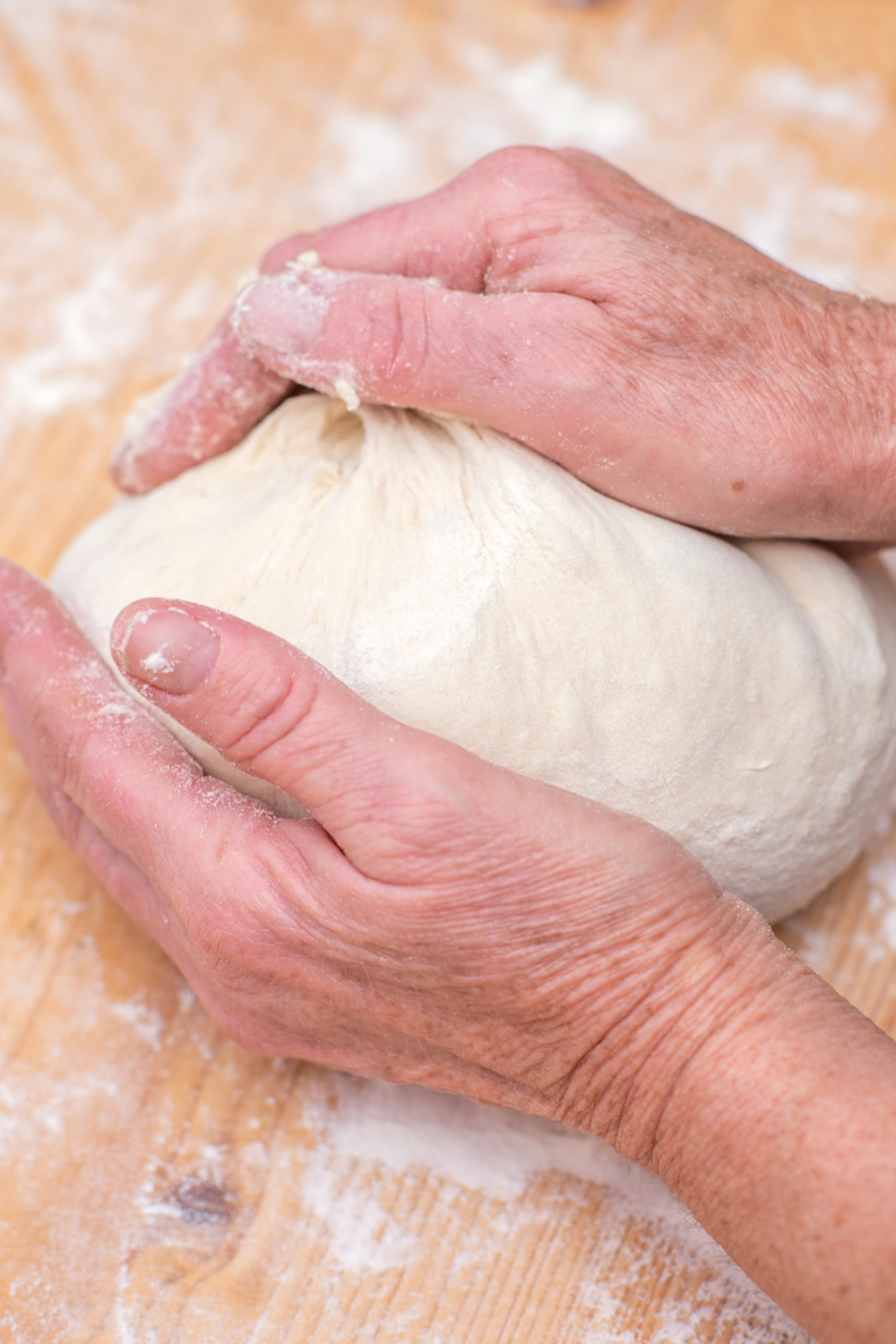
Kneading dough is an art. It is recommended that you give your dough a thorough kneading for up to 20 minutes.
But why is kneading so important? It’s got everything to do with the gluten protein in wheat flour. Among other things, when hydrated, gluten helps with structuring the dough.
When you start kneading, gluten forms a network of walls. The more you knead, the wider the network grows, and the more the dough develops and takes shape.
In addition to structuring the dough, the network of walls traps CO2 produced when yeast feeds on sugars in the flour. This trapped gas inflates the dough and causes it to increase in volume. When the gluten network isn’t well developed, the CO2 easily escapes, resulting in the dough not rising.
So, if you are not kneading your dough properly, the chances are good that the dough will not rise. You can learn the kneading technique to get your dough to rise every time for the perfect pizza base. [4 Reasons Why Your Pizza Dough Is So Sticky (Fix Methods)]
3. Temperature

Proofing, which simply means leaving your dough to rise at room temperature, requires just the right temperatures. A common reason for pizza dough not rising is low proofing temperatures.
You should not store your dough in the refrigerator and expect it to rise—the low temperatures are not enough to activate the yeast, which helps the dough to rise.
If the area where you have stored your dough is cold or not warm enough, the dough might rise slowly or fail to rise all together. The ideal temperature for homemade pizza dough to rise is 75 to 80 degrees Fahrenheit.
How To Make Pizza Dough Rise
As we’ve found out, when pizza dough does not rise, the main culprits are yeast, temperature, and the kneading technique. Fortunately, most of these problems are easily solvable with a few easy hacks.
Here’s what to do when you discover your pizza dough is not rising:
1. Place the dough in a warmer location
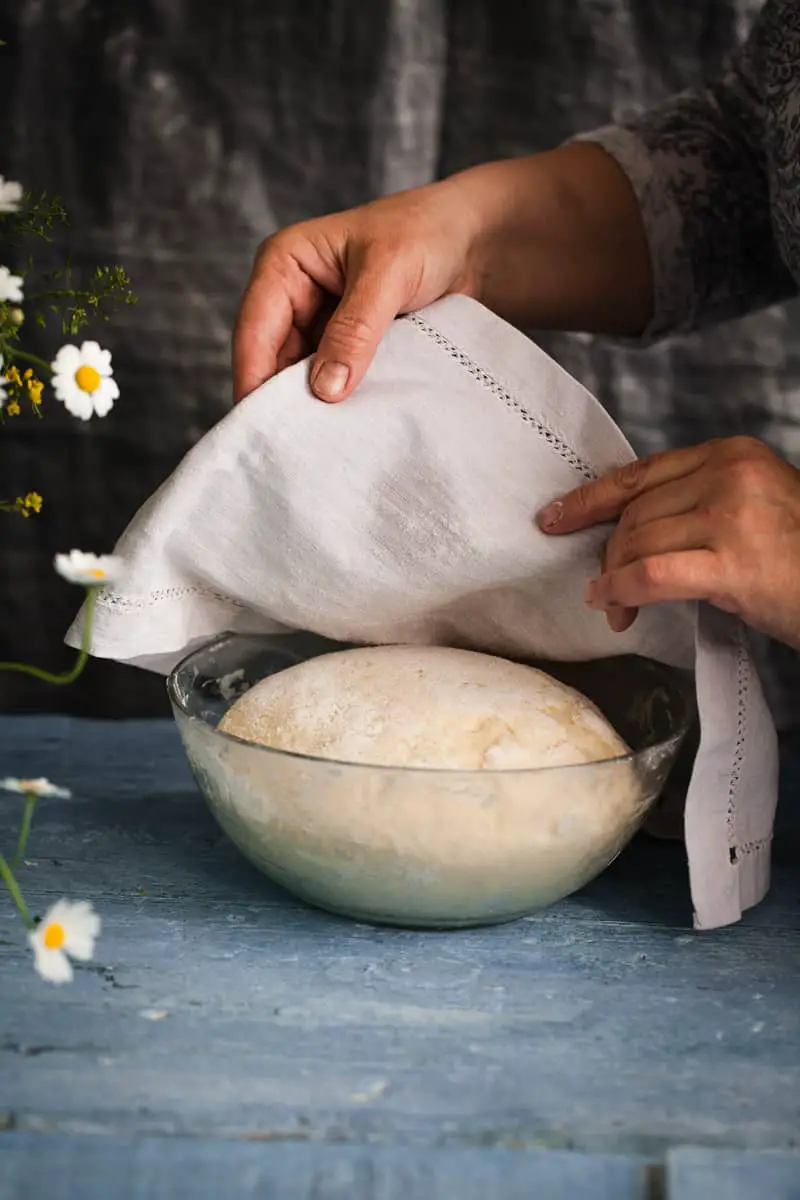
Yeast needs warmth and moisture to thrive. Usually, leaving the dough on the countertop at room temperature is enough to increase the dough’s volume. If you’ve done this and the dough is still flat, you will need to increase the temperature to activate the yeast. The oven is a good place to start.
Place the wrapped pizza dough on the oven’s middle rack. Then, position a cup of boiling water under this rack and close the oven door. This will build up heat and create a make-shift oven without cooking the dough. If the yeast is just right and you kneaded correctly, the dough should now begin to rise.
2. Add more yeast
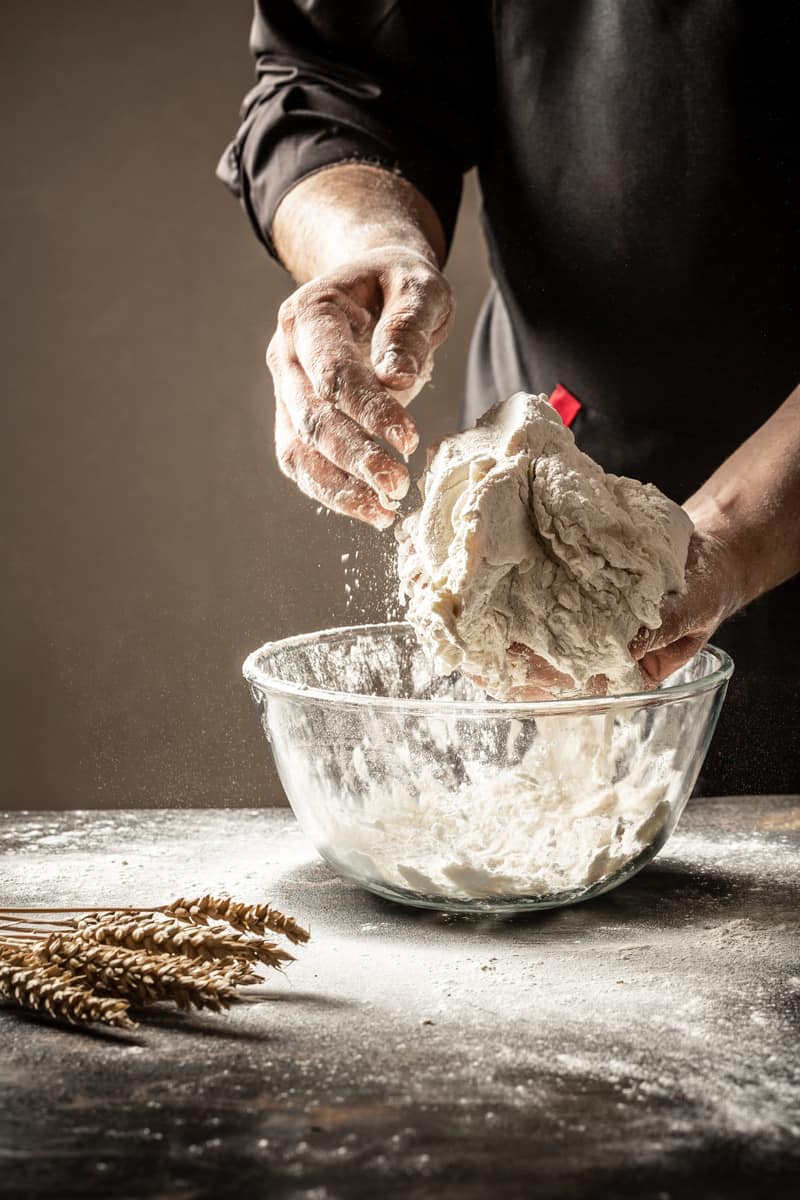
Ensure that you are using fresh yeast. To check, mix one teaspoon of yeast with 1 cup of room temperature water. After 10 minutes, there should be a 1-inch layer of foam on top of the mixture. If this doesn’t happen, you will know that the yeast is the problem and needs to be replaced.
Once you successfully proof the yeast, you want to knead it into the dough to ensure that the dough has enough yeast to rise.
But, it would be best if you didn’t pour the yeast mixture directly into the dough. Instead, prepare a small mixture of water and flour, add the yeast mixture, then combine this with the flat dough.
Knead for 10 to 15 minutes or until the dough attains a firm and smooth consistency. After this, be sure to place it in a warm place, and the dough should rise within an hour.
3. Give the dough a good knead
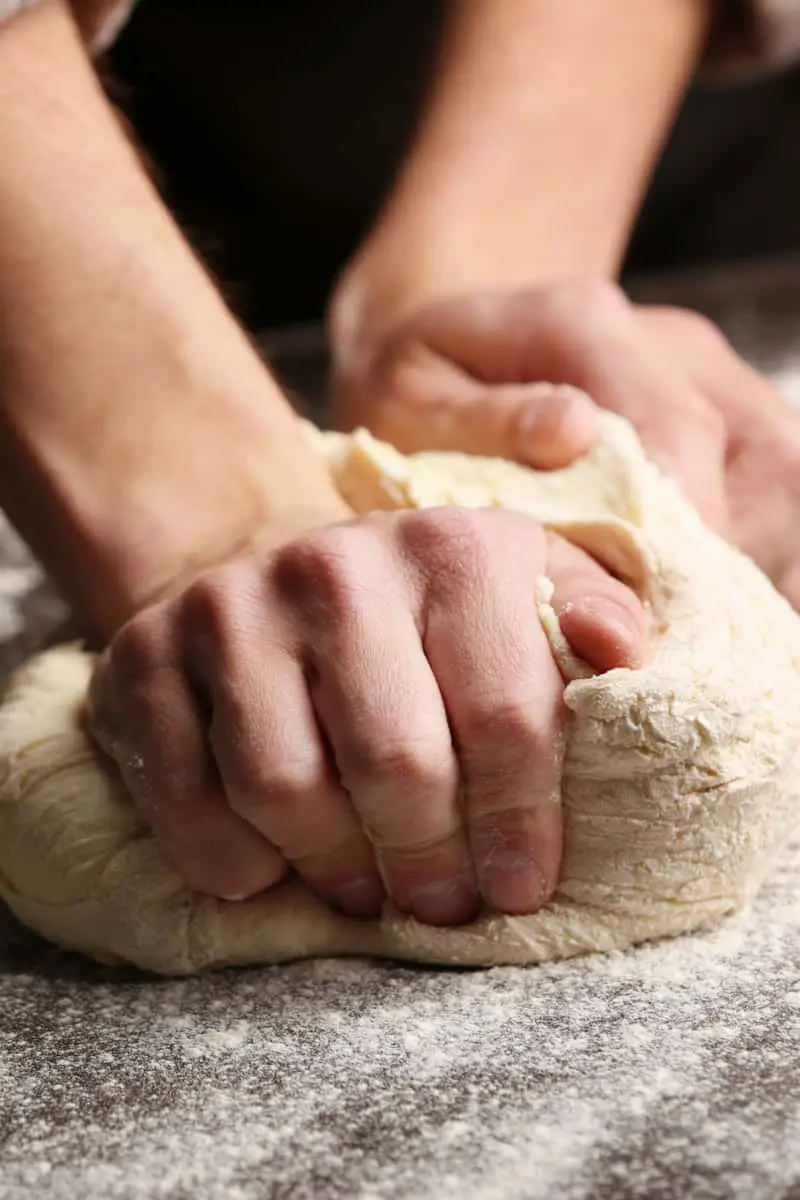
Sometimes, the reason why pizza dough will stay flat is due to under-kneading. All that the dough might need is a bit more kneading to get it to rise.
Ideally, you should knead pizza dough for up to 20 minutes. It is also important to use the right kneading technique to ensure that the dough traps enough air to rise.
4. Proof against dough that won’t rise
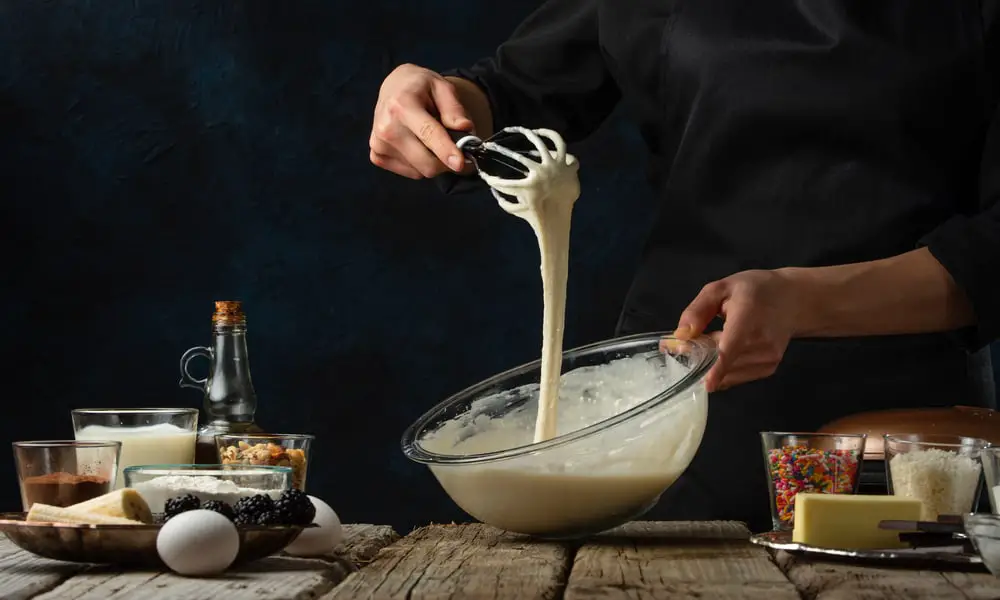
In the future, there are a couple of steps you can take to avoid a situation where the pizza dough doesn’t rise. First, try to use a fresh packet of recently bought yeast every time you make your dough and use warm water at about 100 to 110 degrees Fahrenheit to prepare the yeast and dough.
It would help if you also moderated the salt, as too much of it will kill the yeast. Also, always use high-quality ingredients, including the flour and water you use to prepare pizza dough—impurities can interfere with the proofing process.
In addition, make sure that you are also using the right size bowl to store the dough. Opt for a medium-sized bowl that will ensconce the dough and encourage it to rise upward. Lastly, when proofing your dough, aim at an ideal temperature of 75 to 80 degrees Fahrenheit.
Fix Flat Pizza Dough Fast
Nothing is more disappointing than realizing that your ‘perfectly’ made dough won’t rise. Sometimes, this might be due to factors beyond your control, such as humidity or air pressure.
But most of the time, the major causes of your pizza dough not rising are preventable. Hopefully, this guide has helped you troubleshoot and identify areas of improvement to get your dough to rise!


Julie has five years of experience in the restaurant industry, she decided to share her knowledge about her liking and fondness for food and pizza, of course, cooking as her love language. She’s very passionate about what she’s doing, making all the things she writes regarding pizza recipes, very amazing!